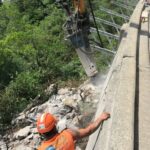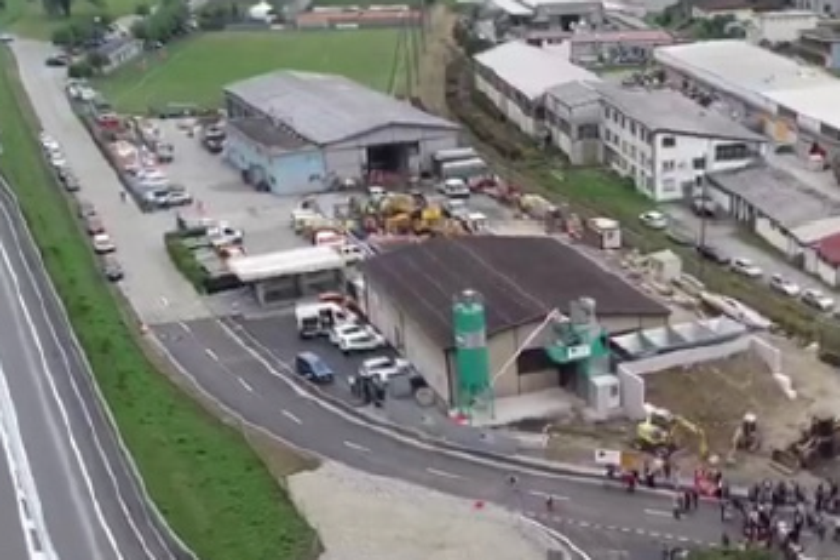La réalisation très attendue par la commune de Grono et toute la région s’est enfin concrétisée. Depuis fin septembre, la nouvelle demi-jonction Grono Nord est en service. Elle permet aux utilisateurs d’entrer sur l’autoroute A13 en direction du sud et de sortir en venant du sud, désengorgeant ainsi le centre-ville de Grono tout en améliorant considérablement la circulation.
Le consortium Censi & Ferrari SA et Giudicetti SA a réalisé les travaux prévus dans le contrat, notamment la réorganisation des intersections existantes entre la «Strada Italiana» et la Via Golena ainsi qu’entre la Strada Italiana et la Via Centro Sportivo. Près de l’accès à l’autoroute A13, plusieurs nouveaux parkings publics à la disposition des utilisateurs ont été réalisés. Les travaux relatifs à la réalisation de la demi-jonction, qui ont débuté en mai 2019, se sont achevés par son inauguration officielle le 26 septembre 2019. Il s’agit là d’un projet important pour la région, attendu depuis des décennies et qui est enfin devenu réalité. Un travail techniquement simple à réaliser qui apportera sans aucun doute des avantages importants aux quartiers situés au nord de la commune et en particulier à la zone industrielle artisanale.
This shortage is being seen in both the airline and the cargo industries. With such a small pool of applicants to choose from, these two sectors are battling to get the most qualified available candidates. Many pilots are increasingly being wooed to get behind the controls of passenger planes over cargo flights—frankly, it’s tough to compete with jobs perks like fixed schedules and free flights for your family across the world.
This is no anecdotal pilot shortage, either—the same problems are found on a global scale, with Boeing estimating an incredible shortage of 790,000 or more pilots across the world over the next two decades. In the shorter term, the domestic industry can expect more than 8,000 unfilled vacancies per year by 2020, and five years later that number could be higher than 12,000 pilot-less flights in need of help. This spells trouble for your supply chain because even if you don’t personally rely on flight to get items delivered, chances are at least one of your key suppliers does.
“And the day came when the risk to remain tight in a bud was more painful than the risk it took to blossom.” Tomas Reuss





